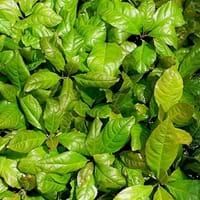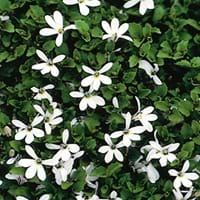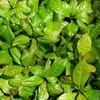Life Span
Perennial
Perennial
Type
Broadleaf Evergreen
Perennial
Origin
China, Japan
Australia, New Zealand
Types
Not Available
White Star Creeper, 'Alba' Super Star Creeper, 'County Park' Dark Blue Star Creeper, 'Little Star Creeper
Number of Varieties
Not Available
Habitat
Not Available
gardens, gully slopes, Terrestrial, Tropical areas
USDA Hardiness Zone
7-9
5-8
AHS Heat Zone
Not Available
7*5
Sunset Zone
Not Available
4, 5, 6, 7, 8, 9, 14, 15, 16, 17, 18, 19, 20, 21, 22, 23, 24
Habit
Thicket/Colonizing
Mat-forming
Flower Color
Light Pink
Light Blue
Flower Color Modifier
Not Available
Bicolor
Fruit Color
Red
Non Fruiting Plant
Leaf Color in Spring
Dark Green
Green
Leaf Color in Summer
Dark Green
Green
Leaf Color in Fall
Dark Green
Green
Leaf Color in Winter
Dark Green
Green
Leaf Shape
Alternate
Ovate
Plant Season
Spring, Summer, Fall, Winter
Spring, Summer, Fall
Sunlight
Partial shade, Full Shade
Full Sun, Partial Sun, Partial shade
Type of Soil
Loam
Clay, Loam
The pH of Soil
Acidic
Acidic, Neutral, Alkaline
Soil Drainage
Well drained
Average
Bloom Time
Summer
Late Spring, Early Summer, Summer, Late Summer
Tolerances
Not Available
Wet Site
Where to Plant?
Container, Ground
Container, Ground
How to Plant?
By dividing rhizomes, tubers, Seedlings, Semi-hardwood cuttings
Divison, Seedlings, Stem Cutting
Plant Maintenance
Medium
Low
Watering Requirements
Average Water Needs, Do Not over Water
Requires watering in the growing season, Use and maintain water-efficient soaker hoses, Water evenly, Water frequently while growing, Water more in summer
In Summer
Average Water
Average Water
In Spring
Less Watering
Average Water
In Winter
Moderate
Moderate
Soil pH
Acidic
Acidic, Neutral, Alkaline
Soil Type
Loam
Clay, Loam
Soil Drainage Capacity
Well drained
Average
Sun Exposure
Partial shade, Full Shade
Full Sun, Partial Sun, Partial shade
Pruning
Prune after harvesting
Proper mowing practices are necessary, Prune for shortening long shoots, prune to control shape, Remove dead leaves, Remove dead or diseased plant parts
Fertilizers
All-Purpose Liquid Fertilizer
Fertilize when fast growth is desired
Pests and Diseases
Not Available
Slugs, Snails
Plant Tolerance
Not Available
Wet Site
Flowers
Insignificant
Showy
Flower Petal Number
Single
Single
Foliage Texture
Medium
Fine
Foliage Sheen
Glossy
Glossy
Attracts
Not Available
Bees, Birds, Butterflies
Allergy
Not Available
Skin irritation
Aesthetic Uses
Ground Cover, Showy Purposes
Beautification, Ground Cover, Landscape Designing, Mixed Border, Ornamental use, Used for decorating walls, fences, gates, hedges, etc.
Beauty Benefits
Not Available
No Beauty Benefits
Environmental Uses
Provides ground cover
Air purification, Indoor Air Purification
Medicinal Uses
Not Available
No Medicinal Use
Part of Plant Used
Flowers, Fruits
Whole plant
Other Uses
Not Available
Showy Purposes
Used As Indoor Plant
No
No
Used As Outdoor Plant
Yes
Yes
Garden Design
Container, Edging, Foundation, Groundcover, Mixed Border, Rock Garden, Wall
Alpine, Container, Groundcover
Botanical Name
ARDISIA japonica
PRATIA pedunculata
Common Name
Japanese Ardisia, Marlberry
White Star creeper
In Hindi
Japanese Ardisia
व्हाइट स्टार लता
In German
Japanese Ardisia
Weißer Stern Kriechgang
In French
Japanese Ardisia
Blanc étoiles creeper
In Spanish
Ardisia japonica
Blanco enredadera estrella
In Greek
Japanese Ardisia
Λευκό αναρριχητικό φυτό αστέρων
In Portuguese
Japanese Ardisia
Branca Baby estrela
In Polish
Japanese Ardisia
Biała Gwiazda pnącze
In Latin
Japanese Ardisia
Stella creeper albis,
Phylum
Magnoliophyta
Tracheophyta
Class
Magnoliopsida
Magnoliopsida
Order
Ericales
Not Available
Family
Myrsinaceae
Campanulaceae
Clade
Angiosperms, Asterids, Eudicots
Angiosperms
Tribe
Not Available
Not Available
Subfamily
Not Available
Not Available
Number of Species
Not Available
Not Available
Importance of Japanese Ardisia and White Star Creeper
Want to have the most appropriate plant for your garden? You might want to know the importance of Japanese Ardisia and White Star Creeper. Basically, these two plants vary in many aspects. Compare Japanese Ardisia and White Star Creeper as they differ in many characteristics such as their life, care, benefits, facts, etc. Every gardener must at least have the slightest clue about the plants he wants to plant in his garden. Compare their benefits, which differ in many ways like facts and uses. The medicinal use of Japanese Ardisia is Not Available whereas of White Star Creeper is No Medicinal Use. Japanese Ardisia has beauty benefits as follows: Not Available while White Star Creeper has beauty benefits as follows: Not Available.
Compare Facts of Japanese Ardisia vs White Star Creeper
How to choose the best garden plant for your garden depending upon its facts? Here garden plant comparison will help you to solve this query. Compare the facts of Japanese Ardisia vs White Star Creeper and know which one to choose. As garden plants have benefits and other uses, allergy is also a major drawback of plants for some people. Allergic reactions of Japanese Ardisia are Not Available whereas of White Star Creeper have Skin irritation respectively. Having a fruit bearing plant in your garden can be a plus point of your garden. Japanese Ardisia has showy fruits and White Star Creeper has no showy fruits. Also Japanese Ardisia is not flowering and White Star Creeper is not flowering . You can compare Japanese Ardisia and White Star Creeper facts and facts of other plants too.



